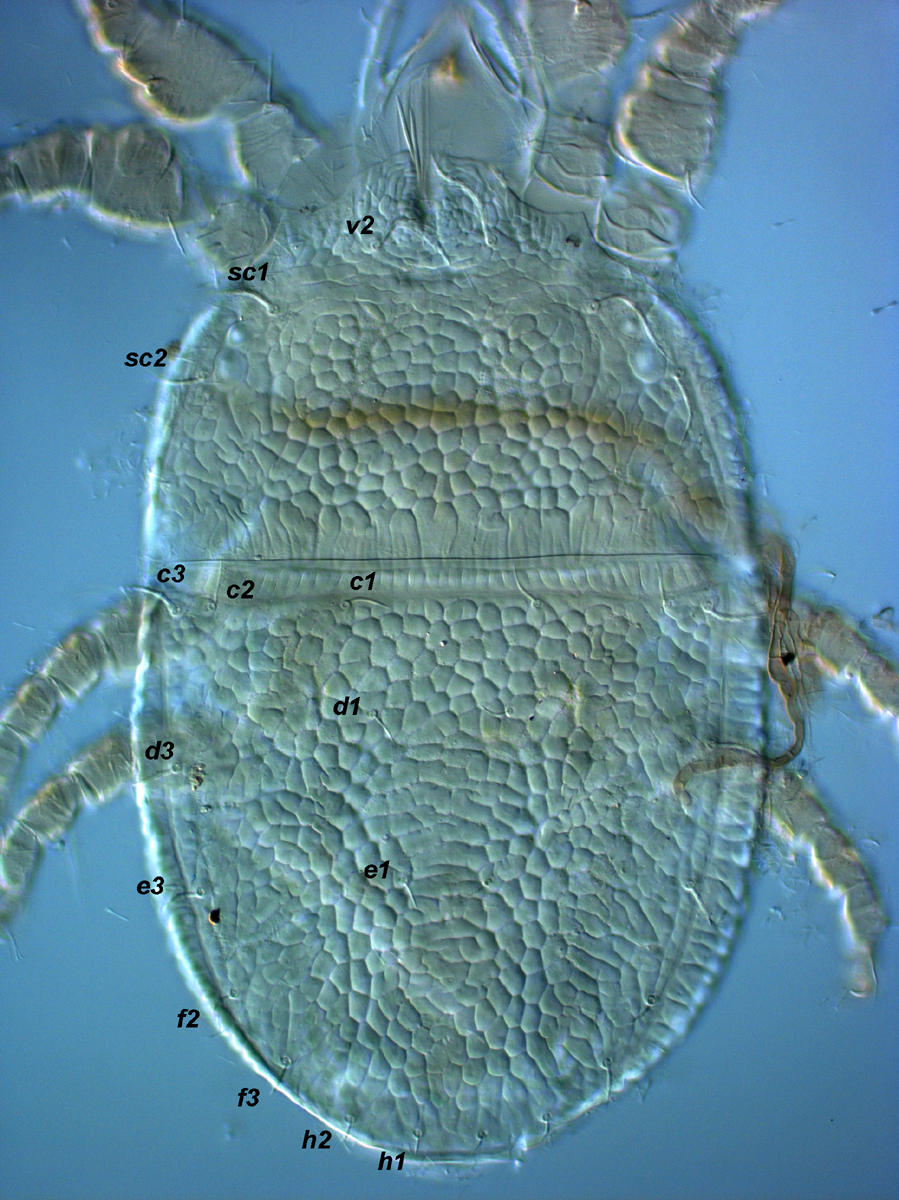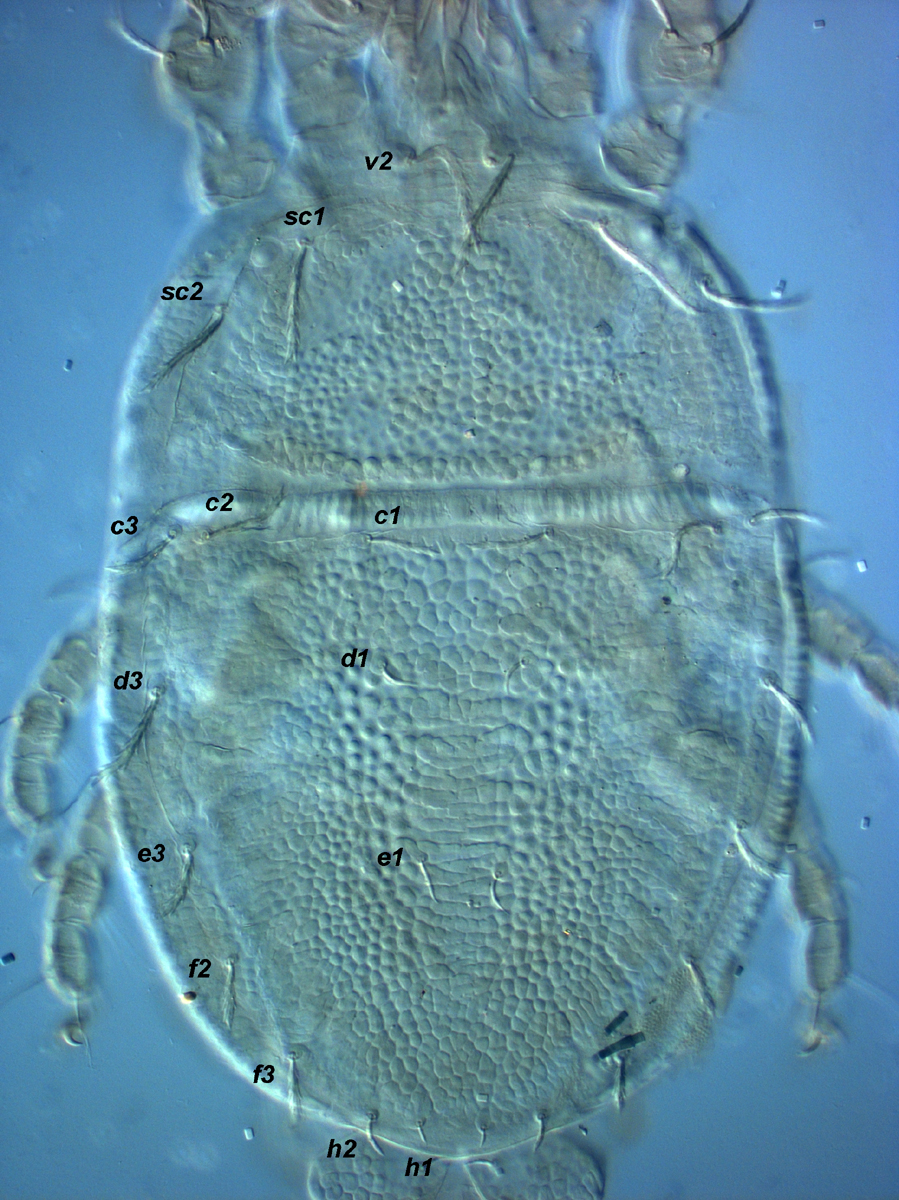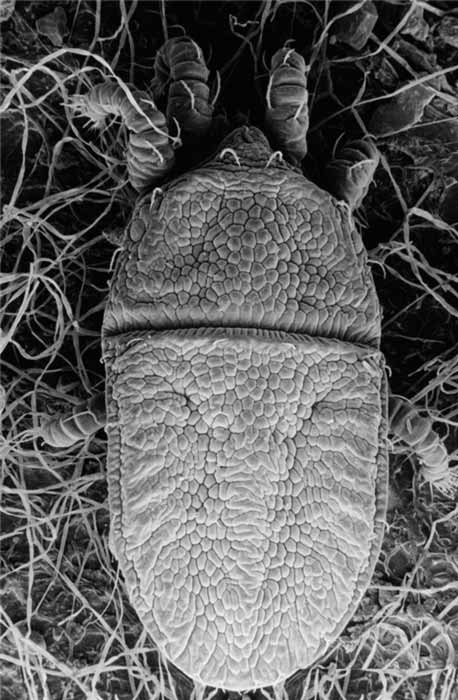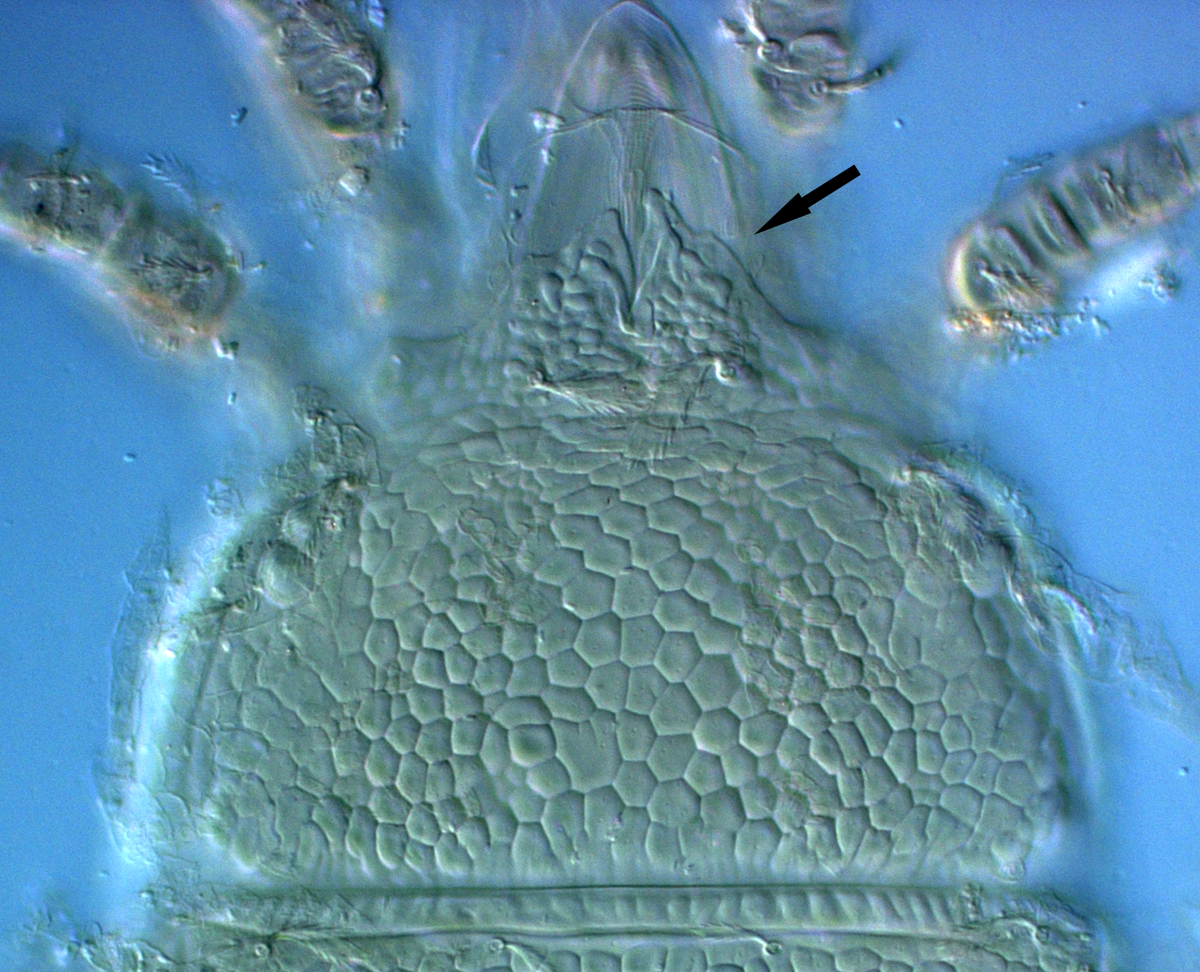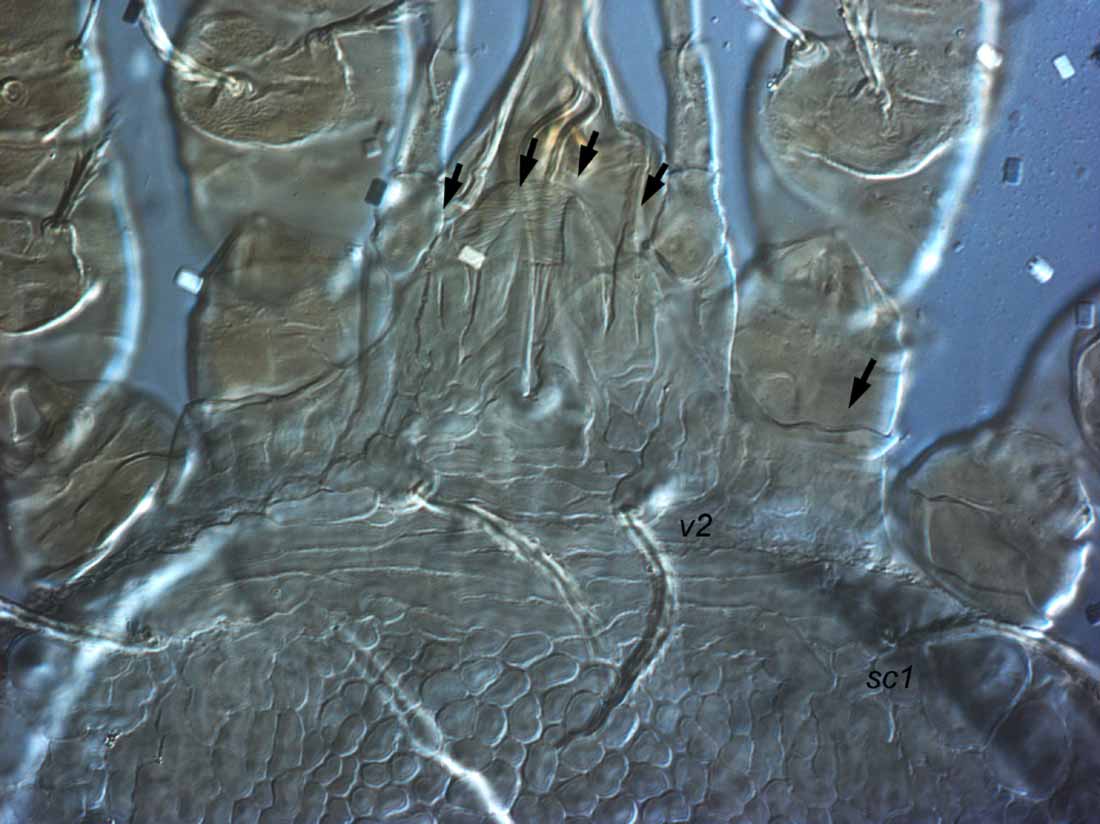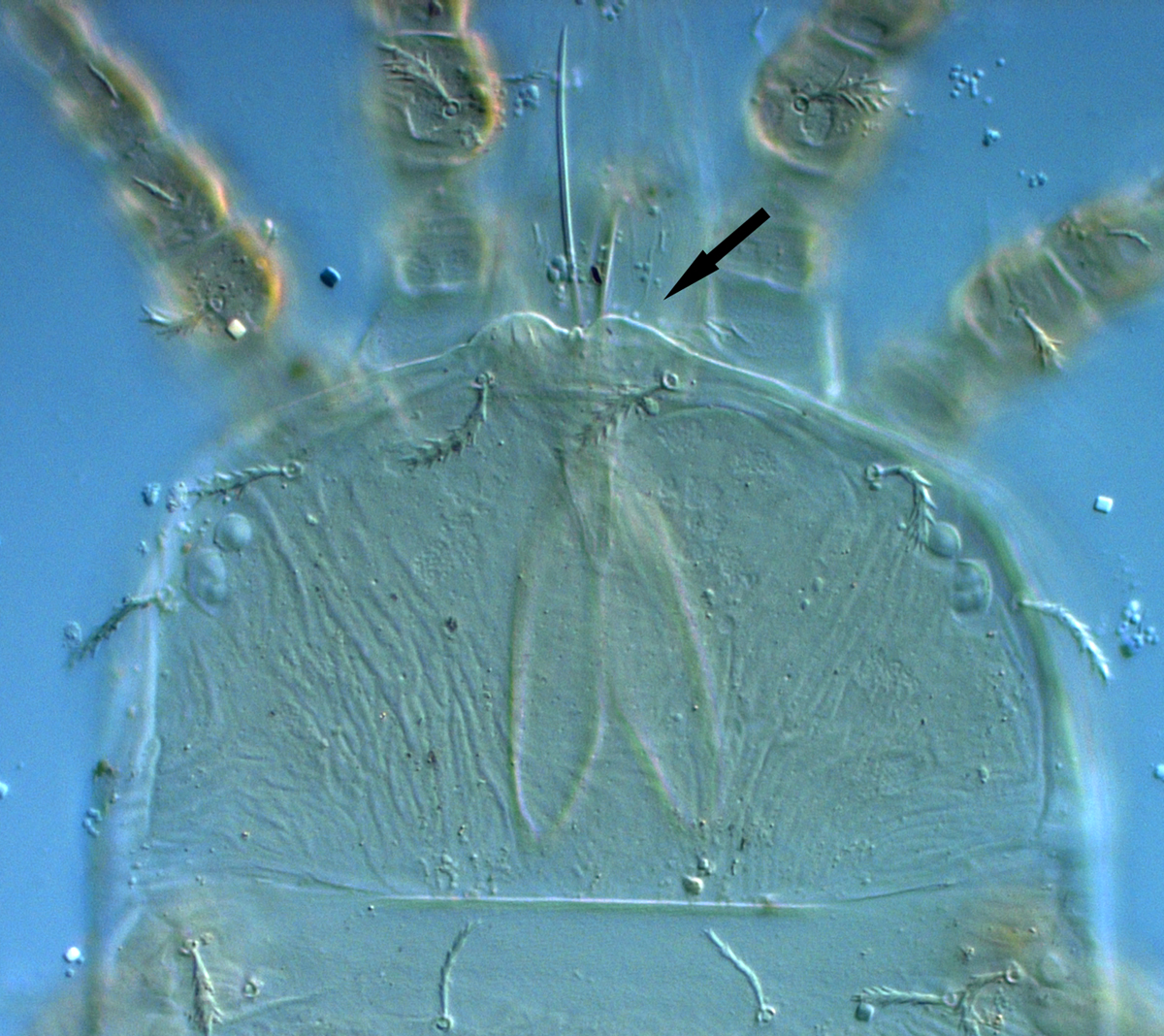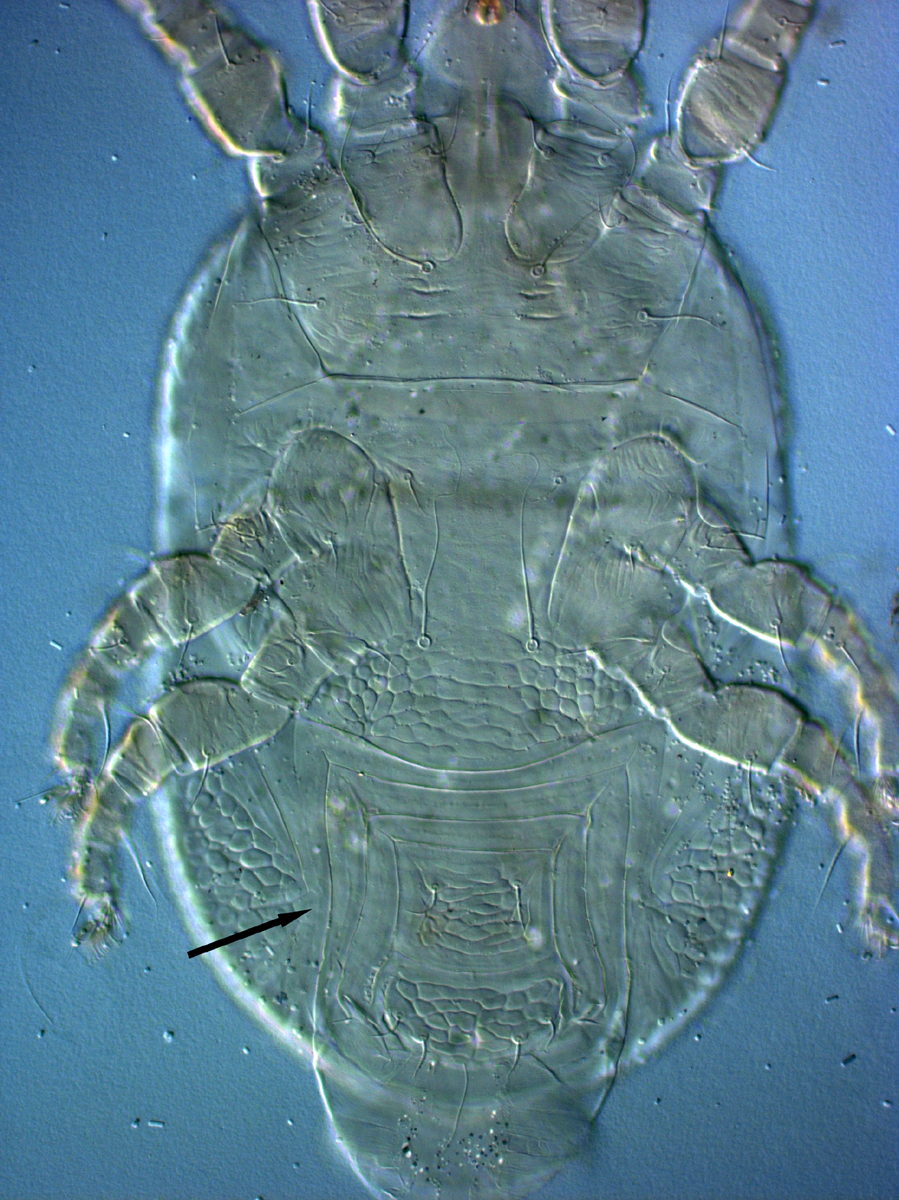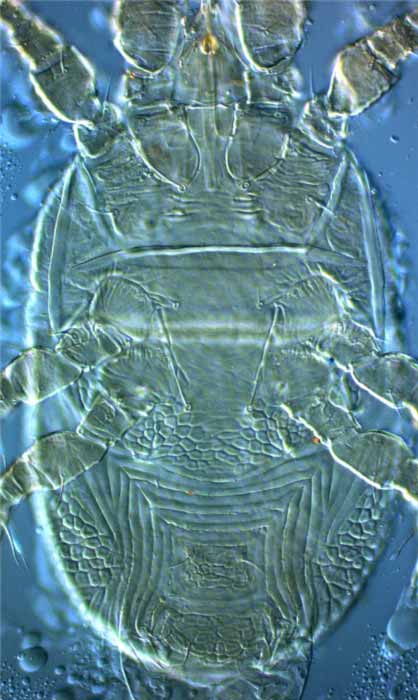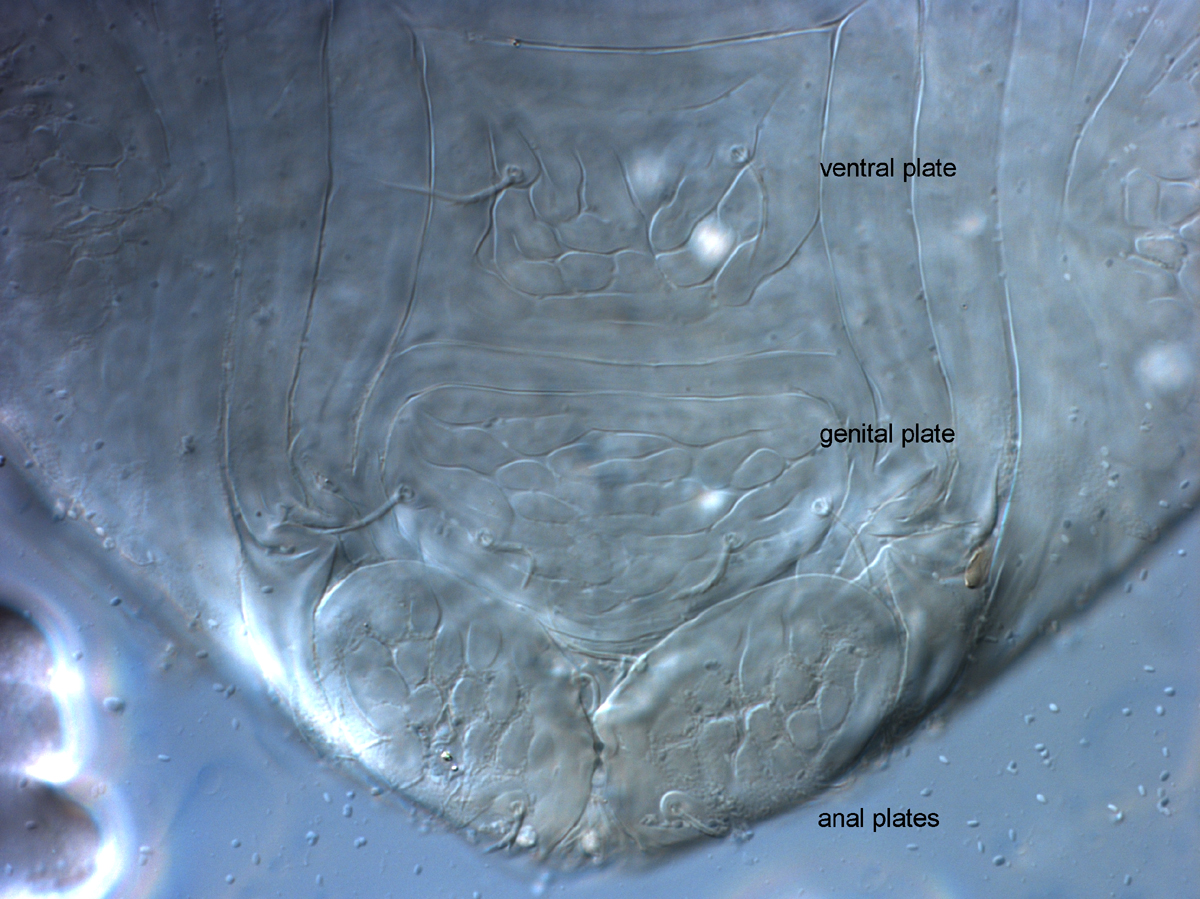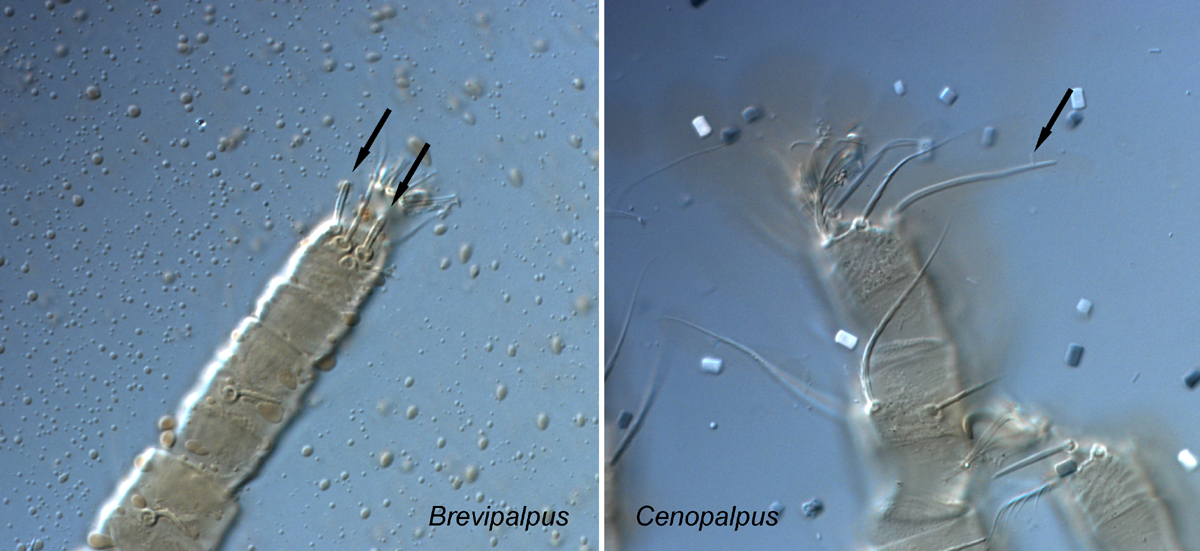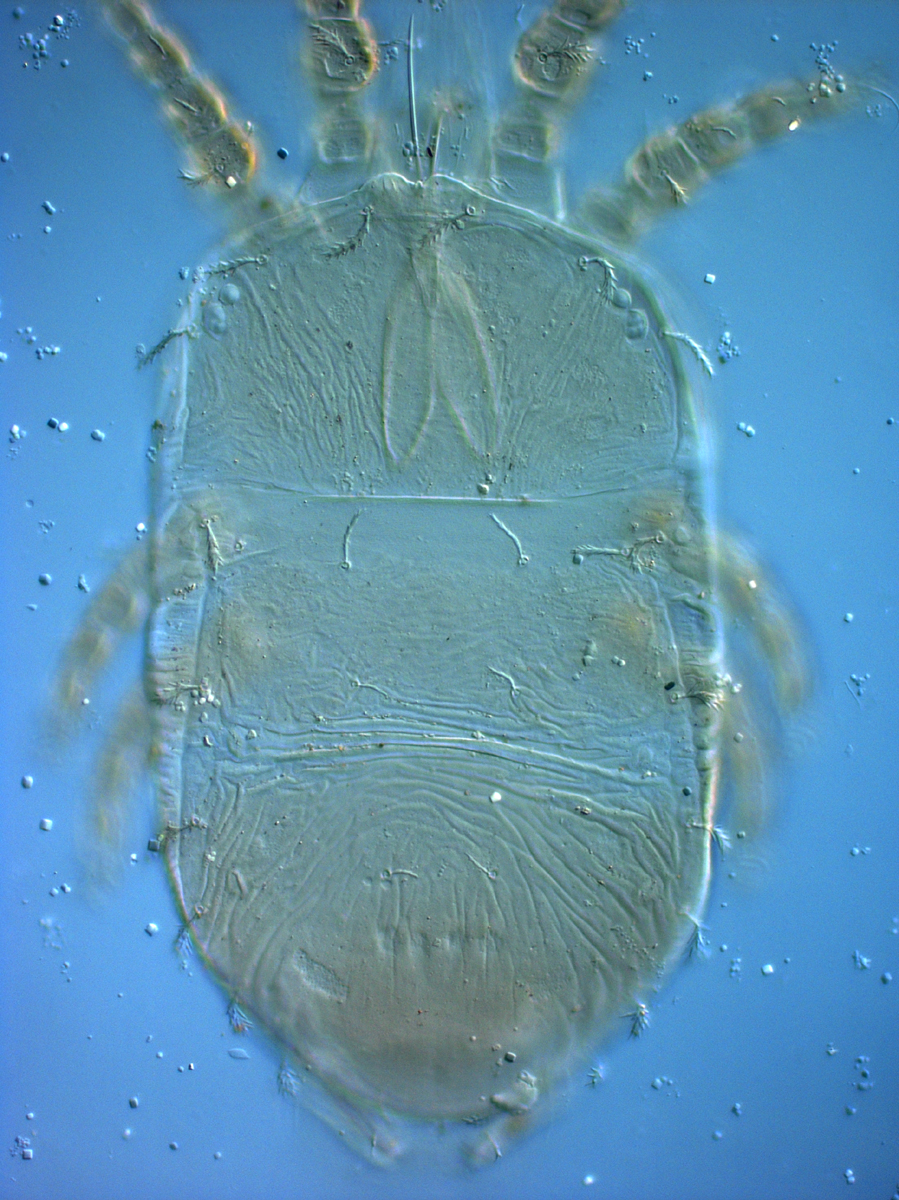Cenopalpus
|
Fig. 1. Cenopalpus pulcher female dorsum. |
|
Fig. 2. Cenopalpus spinosus female dorsum. |
|
Fig. 3. Cenopalpus pulcher female dorsum (image: Eric Erbe, USDA). |
|
Fig. 4. Cenopalpus lanceolatisetae female prodorsum, indicating anterior broad flat projection. |
|
Fig. 5. Cenopalpus spinosus female prodorsal projection (indicated by arrows). |
|
Fig. 6. Cenopalpus nr C. lineola female prodorsum, indicating reduced anterior projection. |
|
Fig. 7. Cenopalpus pulcher female venter - note characterisitc cuticle surrounding ventral plate. |
|
Fig. 8. Cenopalpus pulcher female venter - note characterisitc cuticle surrounding ventral plate. |
|
Fig. 9. Cenopalpus pulcher female posterior venter, indicating well developed plates. |
|
Fig. 10. Solenidion on tarsus I-II of Brevipalpus (short, rod-like) and Cenopalpus (long, slender) (indicated by arrows). |
|
Fig. 11. Cenopalpus nr C. lineola female dorsum, with mostly smooth dorsal cuticle. |
Key characters
- c2 present; d2, e2 absent (Figs. 1, 2)
- f2 present or absent; when present inserted in lateral position (as in Brevipalpus) (Figs. 1, 2)
- h2 not elongate (Figs. 1, 2, 3)
- anterior margin of prodorsum with broad flat projection extending over coxae I-II and gnathosoma (similar to Brevipalpus) (Figs. 4, 5); can be reduced in some species (Fig. 6)
- ventral plate distinct, surrounded by characteristic cuticle pattern (Figs. 7, 8)
- genital and anal plates well developed (Fig. 9)
- 2 pairs ps setae
- 4 segmented palp (rarely 3 segments)
- solenidia on tarsus I-II long, slender (Fig. 10)
- often with a characteristic colicular pattern in dorsal cuticle (Figs. 1, 2, 3); though dorsal cuticle can be mostly smooth or weakly wrinkled (Fig. 11)
Similar taxa
Brevipalpus: dorsal setae c2 absent; solenidia on tarsi I-II short and rod-like (Fig. 10) (except a few species with long solenidia on tarsi I-II, e.g. B. recki)
Number of species
over 60
Authority
Pritchard and Baker
Distribution
Most species are recorded from Western Palearctic region (30 spp.) and Oriental region (17 spp.).
Countries include: Crete, Egypt, Greece, Iran, Israel, Italy, Spain, Turkey, Ukraine.
Hosts
Several families including most commonly Rosaceae, followed by Oleaceae, Pinaceae.
Colour
most species are red when alive

